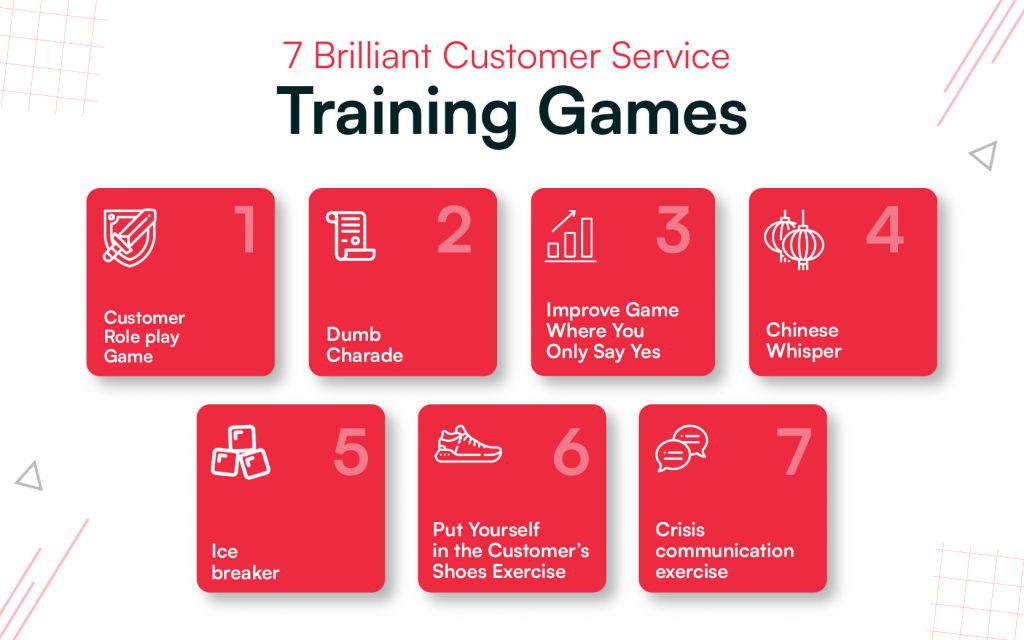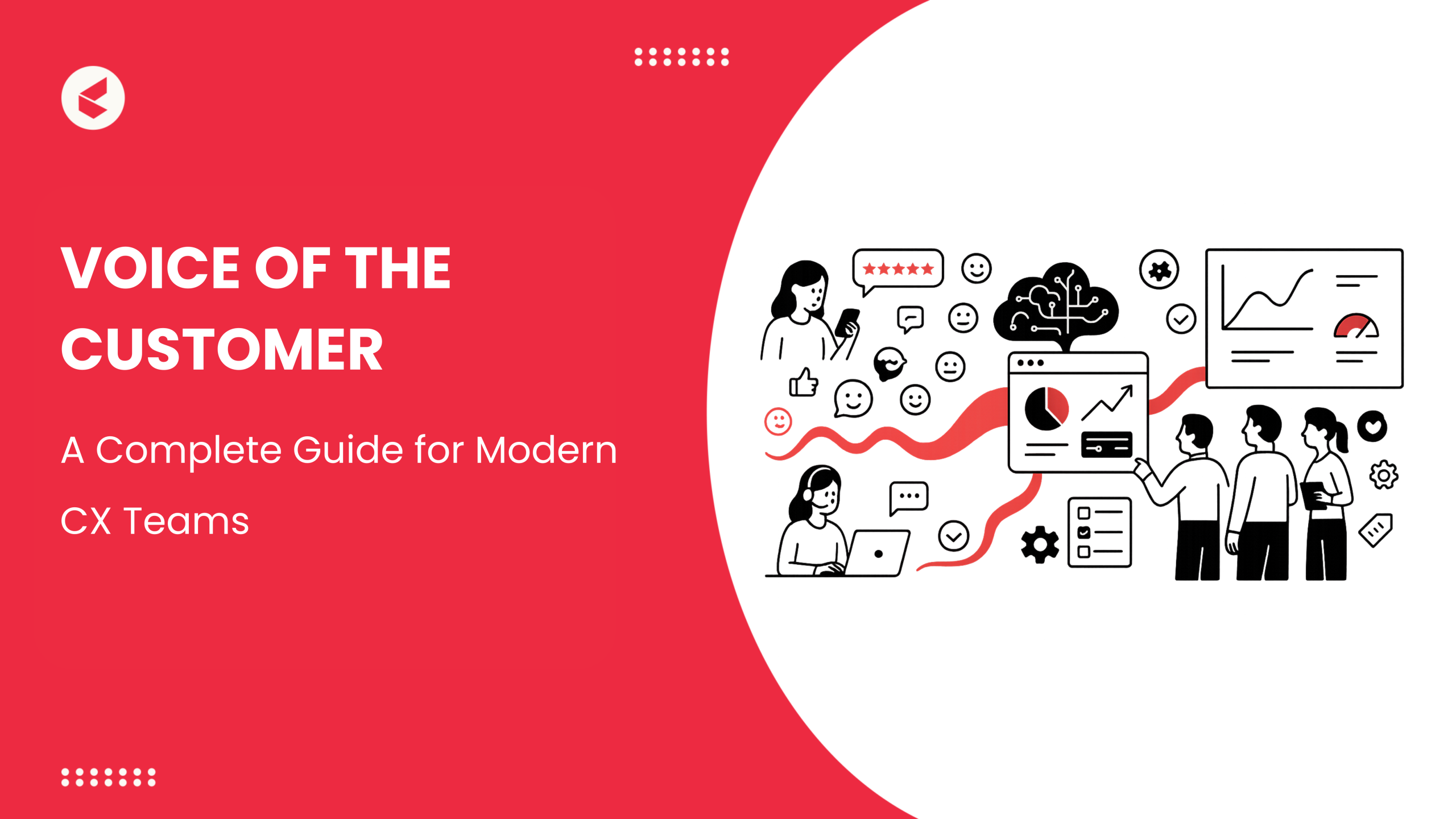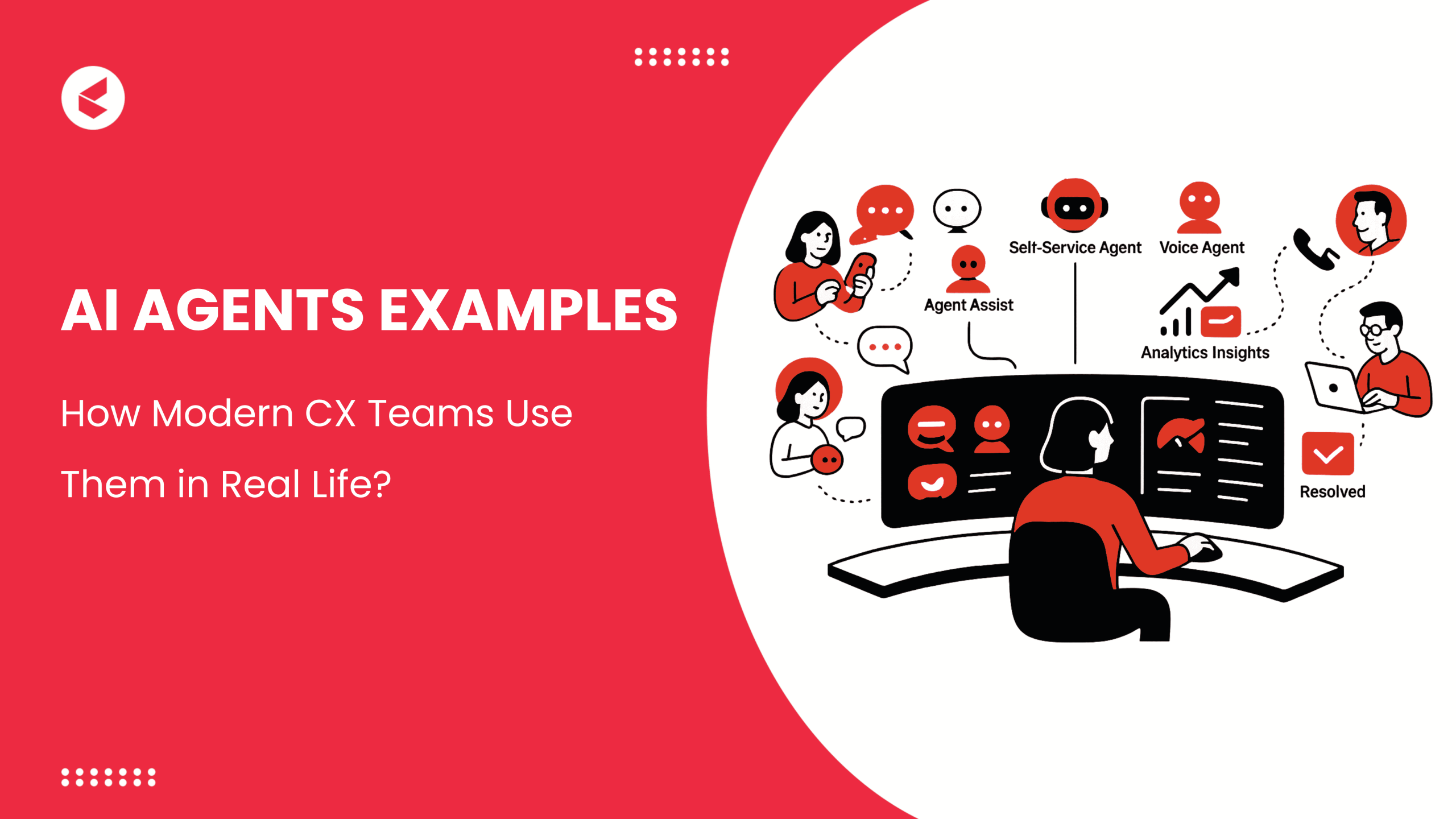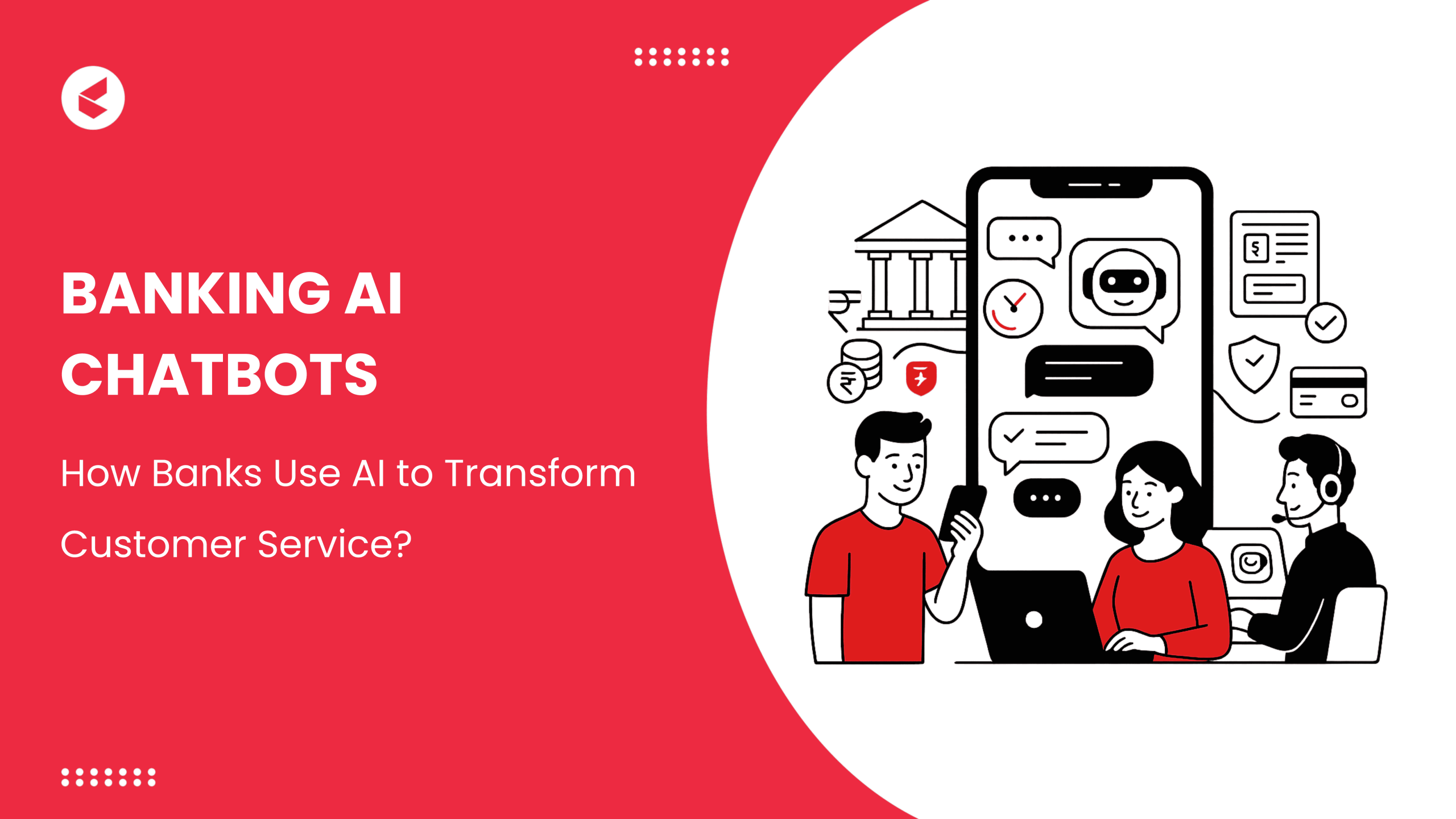Providing brilliant customer service is one of the most important aspects of any successful 21st-century business. According to a report by Khoros, about 65% of customers said they have changed to a different brand because of a poor experience.
The quality of customer service not only affects retention levels and profitability but also has an impact on the overall growth of the organization. But what makes good customer service? The answer is obvious – well-trained customer service agents!
The Significance of Customer Service Agent Training
Be it new customer service reps or old agents, regular agent training is extremely important as it can not only help new agents acquire the skills that they need but can also help existing agents brush up on their skills. Regular customer service training helps agents provide the best customer service experience possible which in turn increases customer satisfaction levels.
How customer service agents handle customer interactions plays a very important role in building a positive brand image. Not providing sufficient training or poorly trained agents can not only frustrate customers but can also result in lowered customer retention levels.
7 Fun Customer Service Training Games Explained!
Customer service training plays a crucial role in equipping agents with the necessary skills to effectively handle a wide range of customer interactions. Below, you’ll find a selection of engaging and insightful training exercises.

1. The Customer Role Play Game
Goals: Improve conflict resolution skills, practice handling exaggerated customer complaints, enhance empathy.
Duration: 30-60 minutes, depending on group size and complexity of scenarios.
Purpose: To simulate real-world customer interactions and prepare agents to handle challenging situations with professionalism and empathy.
Customer service reps can be divided into two groups.
In the first group, customer service reps can play the role of angry and annoyed customers with exaggerated complaints (like the product is too perfect or that the shirt looks prettier than expected). In the second group, customer service reps can play the role of actual customer service agents who are trying to resolve the ticket being raised.
Set specific goals for each group, such as achieving resolution while maintaining customer satisfaction. This exercise helps customer service reps understand how barbaric or ridiculous customer complaints can be handled smoothly.
2. The Dumb Charade game
Goals: Enhance communication skills, promote teamwork and creativity.
Duration: 45-60 minutes, allowing time for planning and multiple rounds.
Purpose: To encourage agents to effectively convey product names, service features, or company values through gestures and teamwork.
The instructor can divide the agents into groups and pick one member from each group to perform actions. Each chosen member can be given the name of a product or service that is being offered by the company. Agents will then have to imitate in a manner that will help their group members identify the name of the thing assigned to them.
This is not just team-building exercise but an activity that can help your agents understand your product better. An agent who knows your product well will be equipped to deal with customer concerns more effectively.
3. The Improvised Game: Say Yes Only
Goals: Foster creative problem-solving, practice patience and adaptability.
Duration: 60-90 minutes, including preparation and improvisation rounds.
Purpose: To challenge agents to find solutions and respond positively to absurd customer requests, improving their ability to think on their feet.
In this game, the instructor can divide the agents into groups of 4 or 5 and give each team a prompt/theme that they have to use in their improvised script. But there is a twist! The agents can only say yes and cannot deny any kind of request made during the improvisation. Saying yes to everything a member says or does during the improvisation helps agents come up with unique solutions, responses to absurd customer requests, etc.
This exercise helps agents explore different ways in which they can deal with absurd customer tickets raised with the help of the help desk ticketing system. In addition to getting their creative juices running, agents also develop a sense of patience needed to deal with such customers through this game.
4. The Chinese Whisper game
Goals: Enhance listening skills, emphasize the importance of clear communication.
Duration: 30-45 minutes, depending on the number of participants.
Purpose: To illustrate how communication can be distorted and the importance of accurate information relay.
The agents can be made to stand in a straight line and the instructor can give the 1st member of the line a message that has to be whispered and transferred from the 1st agent to the 2nd agent and from the 2nd to the 3rd and so on till it reaches the last agent in the line. The exercise is successful only if the last agent in the line gets the message that the instructor gave the 1st agent right.
Though this game is prevalent and fun people tend to forget what the game brings out. This game is an excellent opportunity to judge how good customer service reps’ listening skills are. Listening is an important part of any help desk agents’ job.
5. The Icebreaker game
Goals: Promote team bonding, encourage open communication, break down initial barriers.
Duration: 30-45 minutes, depending on the complexity of tasks.
Purpose: To create a relaxed environment where agents can get to know each other and work collaboratively.
For this game, the instructor can divide the agents into groups of 5 and can assign a wide range of tasks like building block exercises where agents are given a set of blocks or Legos and are asked to build a structure.
Another good idea for an Icebreaker is dividing agents into groups of 3 and asking them to find out 3 facts about the other two members of their teams and later noting them down on a paper. This not only helps agents break the ice between them but also allows them to bond in a very personal and fun manner.
Ice breakers can help agents step out of that initial stage of shyness quickly and also in a fun manner.
6. The “Put yourself in the Customer’s Shoes” Exercise
Goals: Develop empathy, anticipate customer needs, improve customer journey understanding.
Duration: 60-75 minutes, including brainstorming and sharing sessions.
Purpose: To help agents understand customer perspectives and identify potential pain points across different stages of the customer journey.
The agents can be divided into groups of 3 or 4 and can each be given a different part of the customer journey. All the agents have to do is put themselves in the shoes of customers and later brainstorm various customer expectations with respect to that particular part of the customer journey. After brainstorming all the members of the group can jot down 4-5 points each and share them with the other agents.
This exercise enables customer service agents to put themselves in the shoes of their customers and think out various reasons due to which the customers might feel like they have a problem. Now that they know about the plausible customer issues in each stage of the customer journey it becomes easier for agents to come up with solutions for the same.
7. The Crisis Communication Exercise
Goals: Prepare for handling crisis situations, practice using the help desk ticketing system effectively under pressure.
Duration: 60-90 minutes, allowing time for scenario discussion and role-playing.
Purpose: To simulate high-pressure scenarios and equip agents with skills to manage customer inquiries during crisis situations.
Businesses go through a period of crisis at least once in a year or two. It can be faulty products, delayed deliveries, etc. During such times businesses tend to see an influx of customer tickets being raised.
In this exercise, agents are provided with a crisis prompt or crisis situation using which they have to come up with at least three responses that they are likely to use to handle the ticket management system during a crisis situation. To make the most of this exercise, businesses can also explore Beautiful AI alternatives that offer intuitive presentation and visualization tools. This exercise helps agents explore different ways of using Help Desk Software so that they can easily handle crisis communication. It helps them get creative and at the same time allows them to learn from other agents as well.
Advanced Customer Service Training Concepts
While these games are a great way to train your agents and keep up their morale, it is important to ensure they are truly equipped with the knowledge required to handle complex customer queries. Following are a few initiatives that can help with agent training:
1 . Product and Service Knowledge Workshops: Comprehensive knowledge of products or services enables agents to provide accurate information and solutions. Conduct workshops that focus on deepening understanding and addressing FAQs.
2. Handling Difficult Situations: Provide training on handling challenging situations such as customer complaints, escalations, or irate customers. Techniques for de-escalation, active listening, and conflict resolution are essential here.
3. Multimedia Learning Modules: Use multimedia tools such as videos, podcasts, and interactive modules to make training sessions engaging and impactful. Visual aids can simplify complex concepts and reinforce learning.
4. Customer Feedback Analysis: Analyze customer feedback and reviews during training sessions to identify areas for improvement. This fosters a customer-centric mindset and aligns training goals with actual customer expectations.
5. Soft Skills Development: Focus on developing soft skills like empathy, patience, and effective communication through workshops and exercises. These skills are crucial for building rapport and trust with customers.
Well-trained Agents = Amazing Customer Service
In conclusion, investing in comprehensive customer service training is essential for any business aiming to provide exceptional support and enhance customer satisfaction. These training exercises not only equip agents with the necessary skills but also foster teamwork, creativity, and effective communication.
Kapture’s robust customer support platform is designed to seamlessly integrate these training initiatives, offering a range of customizable features that streamline your helpdesk workflow. With Kapture, you can ensure that your team is well-prepared to handle any customer interaction with confidence and efficiency.
Empower your support agents with Kapture’s intuitive, user-friendly interface and automated tools, enabling them to deliver outstanding service every time. Elevate your customer support strategy today with Kapture, and experience the difference of a truly optimized and responsive helpdesk solution.
Frequently Asked Questions
Customer service training is essential for equipping agents with the skills needed to handle diverse customer interactions effectively. Moreover, it enhances their ability to provide exceptional support, improves communication, and fosters teamwork. Consequently, this leads to increased customer satisfaction.
Customer service training should be conducted regularly to ensure that agents stay updated with the latest skills, tools, and techniques. Depending on the business needs, training sessions can be scheduled monthly, quarterly, or bi-annually, with additional sessions as needed for specific updates or new feature rollouts.
Metrics to track include customer satisfaction scores, average handle time, first call resolution rates, and the number of escalations. Monitoring these metrics helps assess the impact of training on service quality and identify areas for improvement.
To keep training engaging, incorporate interactive activities, real-life scenarios, role-playing, and games. Provide regular feedback, encourage participation, and use multimedia tools to make the training sessions more dynamic and enjoyable.
Yes, training exercises can be adapted for remote teams using virtual tools and platforms. Online role-playing, virtual meetings, and collaborative tools can help facilitate training exercises and ensure remote agents receive the same level of training as on-site teams.













